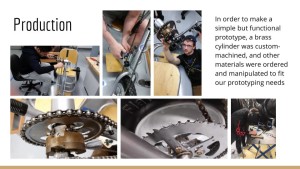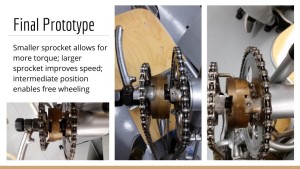The text below contains an excerpt from the Mobility Worldwide speech on 10/30/22. You will find a link to the entire speech at the bottom of this post.
Scott Walters, the Executive Director of Mobility Worldwide, asked me to speak on the evolution of HWI’s trike at their annual board meeting. Mobility Worldwide is compiled of over 21 affiliates in the USA and beyond, and is nearing the delivery of their 100,000th hand-cycle.
The meeting was in Holland, Michigan, only a two-hour drive from my new home in Midland, MI, which made it convenient to drive, and afforded the opportunity to take two different trike models. Thanks to my nearby cousin Lynne, I had food, lodging and family fun too.
As I prepared for the presentation, I had the opportunity to reflect on why HWI exists, remember our passions, and consider the various ways God has used HWI in the past 17 years.
HWI Guiding Principles
- A ministry for God’s glory, guided and directed through prayer.
- Not asking for money as God challenged me. (doesn’t mean others can’t ask for money on our behalf). We’ve been a financially lean yet flourishing organization.
- Doing what I do best—networking, resourcing, without taking on the expectations of others. For example, I wasn’t going into manufacturing. (Doesn’t mean someone else couldn’t use our design or even parts of our design and go into manufacturing).
- Providing a tool so the nationals could help their own people
- Providing dignity by not creating dependency and considering ways the trike could help someone earn a living.
HWI Mission:
- Mobilizing God’s Work Worldwide through the platform of hand-cycles, (hand propelled wheeled mobility device), we affectionately call trikes.
- We didn’t put limitations on what we were going to do. We came up against limitations. All dreams were equal—not too big, and never too small to pursue.
HWI Vision:
- Furthering God’s Kingdom through collaboration, for the further potential and development of hand-cycles, and empowering the end-user via mobility and opportunity.
Probably the most important part of my speech was demonstrating the concept of rake, the angle of the front end, in relationship to the chassis of the trike needed for proper ergonomic hand positioning. Afterwards, some of the design team continued the discussion with me, realizing that they needed to examine the rake relationship on their own designs. Scott was very appreciative in this response.w “Thank you for attending. Your presentation received high marks on the survey. Would you mind sending your presentation to me so I may post on our internal website?”
While networking with one of Mobility Worldwide partners in Liberia, I learned they would like copies of our children’s coloring book. We are sending 250 copies with a container shipping out soon.





